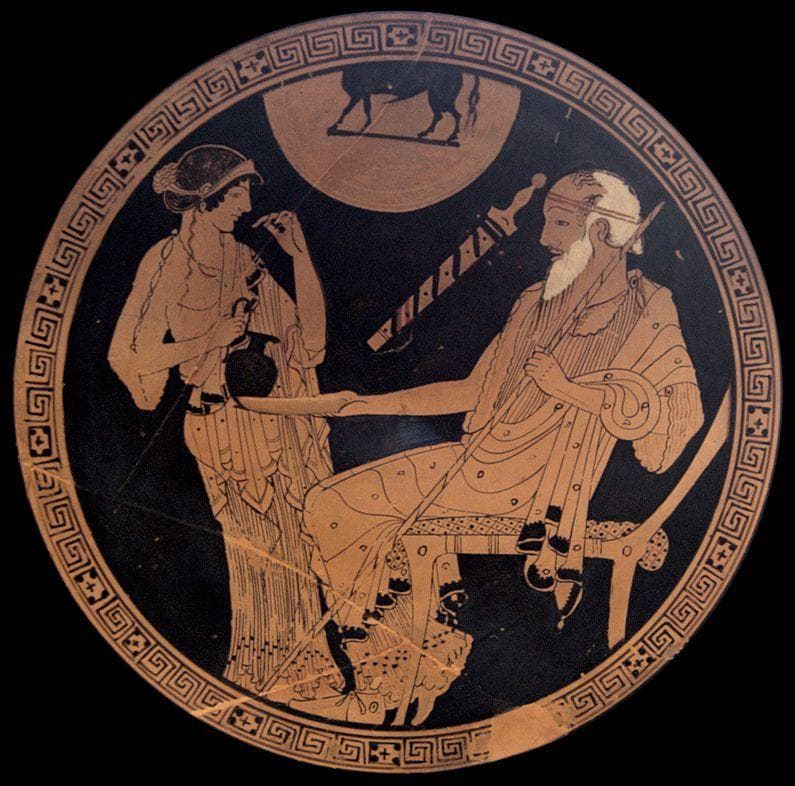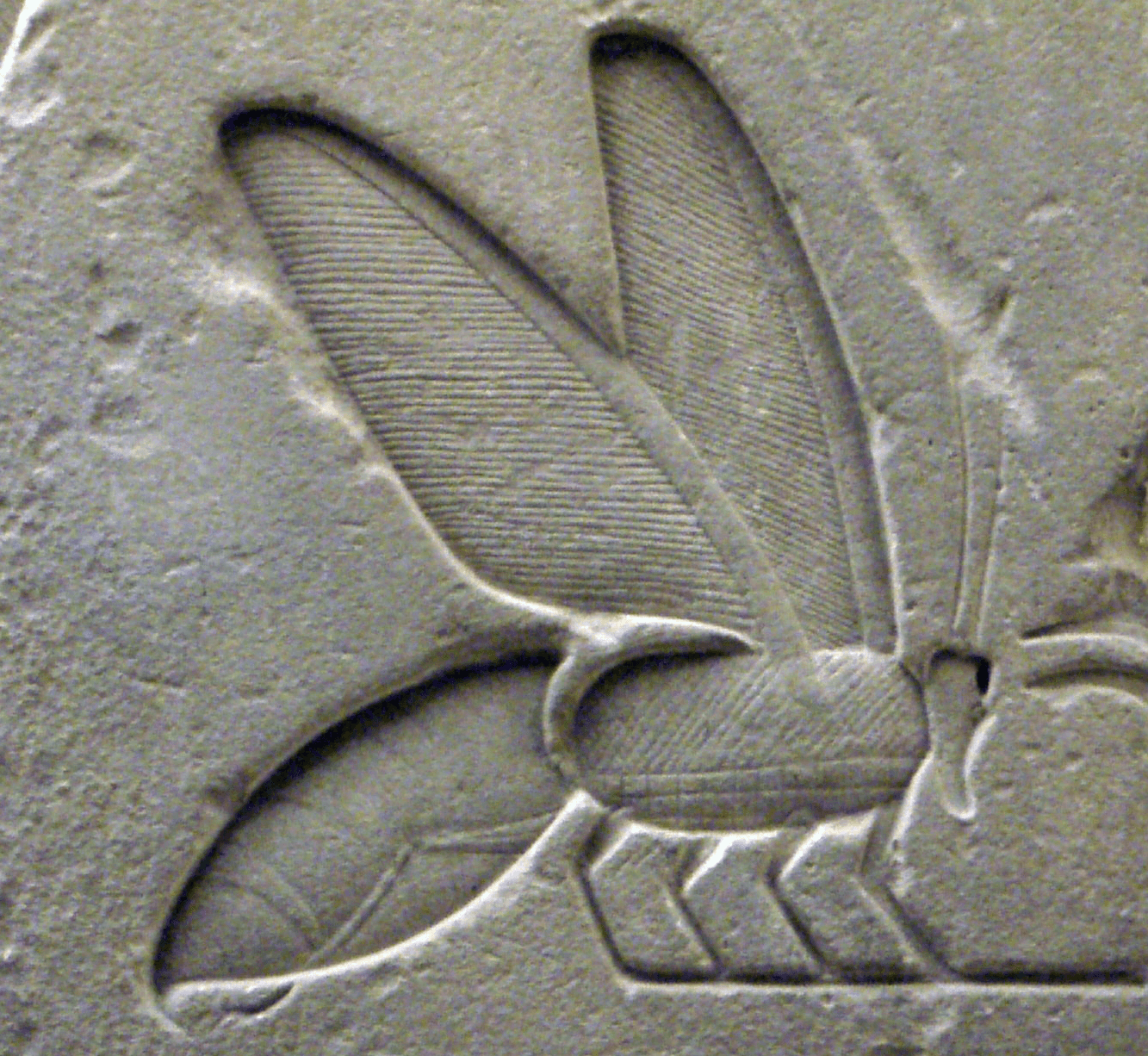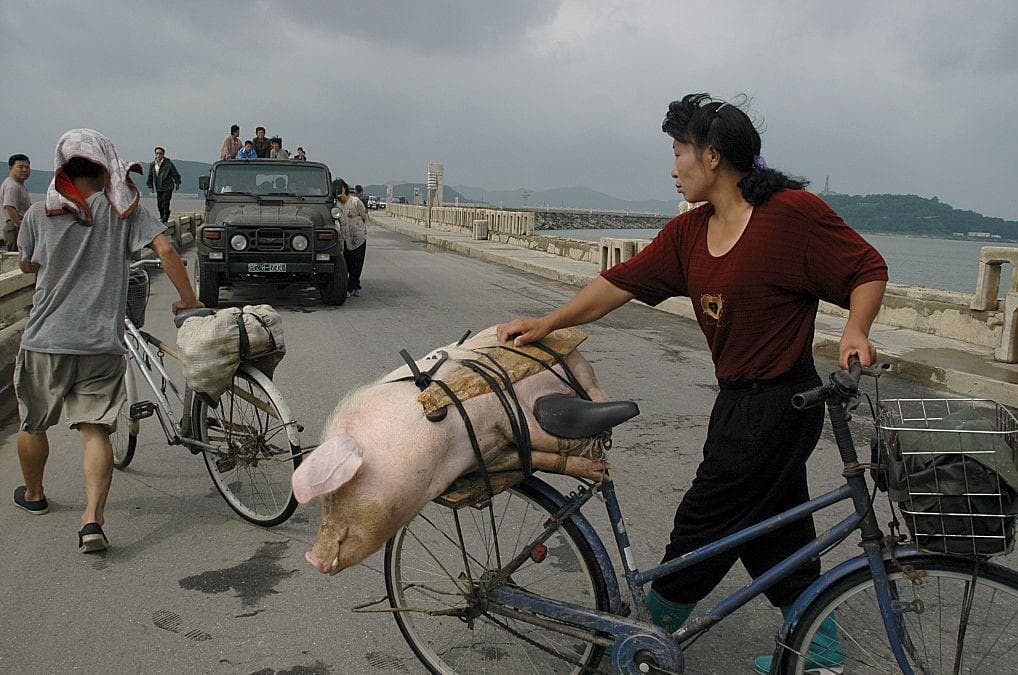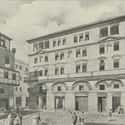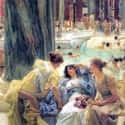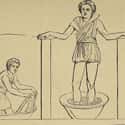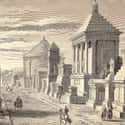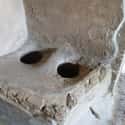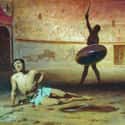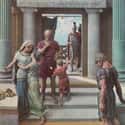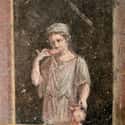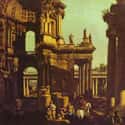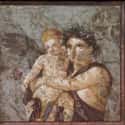-
(#1) The City Was Overpopulated, But Housing Was Also Extremely Limited
As early as the sixth century BC, Rome began taking census information to assess the numbers and needs of its population. While the Romans kept records on population, historians debate the accuracy of the data. The population of Rome itself is generally believed to have been in the hundreds of thousands during the first century BC, perhaps as high as 800,000 during the reign of Augustus (r. 27 BCE-14 AD). The population of the city continued to go up, hitting as many as 1 million residents during the second century AD.
The population was a mix of free men and women of varying degrees of wealth. High numbers of slaves contributed to the crowded conditions in Rome, where space became increasingly limited. The development of insulae, or tenements, was the result of a need to house the large population. Insulae contained numerous apartments alongside businesses and shops, with large numbers of people living in close confines. Insulae were several stories high, poorly built, and home to poor and moderately wealthy Romans alike. They were also vulnerable to fires, collapse, and the spread of disease.
-

(#2) Wealthy Residents Within The City Lived In Houses Close To The Imperial Palace
One alternative to an insula was a single-family home called the domus. Wealthy Romans lived in domus - and the more money they had, the larger their home. Domus featured one or two stories with reception halls and living rooms called atria. Numerous bedrooms, dining rooms, a kitchen, and a bathroom accompanied outdoor spaces for relaxing. Larger houses could have multiple bathrooms and even private baths.
A domus in Rome was necessarily smaller than a house in one of the other cities in the Roman Empire thanks to the limited space and topography of the city. Some homes in the city could be more like villas, although villas were usually found in more rural settings. Villa-like locations were called horti, although the term also was used to describe gardens and the specifics remain somewhat unclear.
Locations of domus in Rome are difficult to identify, although they were presumably located outside the danger of a rising Tiber River and close to places of imperial importance. Domus could span an entire city block and, unlike insulae, were stand-alone structures that didn't face crowded Roman streets directly.
-
(#3) People From All Walks Of Life Enjoyed The Public Baths
Everyone from slaves to Roman emperors visited public baths in the city. Called thermae by the first century BC, public baths included hot and cold rooms with pools, steam rooms, and dry heat rooms where people could clean themselves, carry out business transactions, and socialize.
Men and women used the same baths until the practice was forbidden by Emperor Hadrian (r. 117-138 AD) during the second century AD. Hadrian himself frequented baths in Rome, famously giving a veteran he saw "rubbing his back and the rest of his body against the wall" one of his own slaves to perform the duty. The veteran was scraping oil off his body, something that would usually be accomplished with a strigil. Most wealthy Romans had slaves or servants to scrape them, but their poor counterparts were forced to do it themselves. Soon after, with "a number of old men rubbing themselves against the wall for the purpose of arousing the generosity of the Emperor, he ordered them to be called out and then to rub one another in turn."
The number of baths in Rome increased from the first century BC through the fifth century AD. Baths also became more luxurious and included additional features like gymnasia and fountains. Historians estimate roughly 170 public baths existed in Rome in 33 BC, with the number rising to between 800 and 900 by 400 AD.
Emperors such as Trajan, Caracalla, and Diocletian gifted Rome elaborate baths that could serve thousands of Romans at one time. Diocletian (r. 284-305 AD) built the largest, a structure with massive pools lined with marble-clad walls and granite columns.
-
(#4) People Didn’t Often Wash Their Clothes, But When They Did, They Used Urine
The job of washing clothes in Rome fell to the fuller. Many Romans didn't wash their own clothes and fullers provided an essential service in the city. Without the use of soap, fullers were tasked with cleaning linen and woolen garments, bleaching them to rid them of sweat and grime. The best way to accomplish this was by using urine, often collected from pots found throughout the streets of Rome. An alternative to human urine was urine from animals, both of which contained ammonia - an ideal cleaning agent.
Clothing was put into a vat with water and urine, where fullers would stomp on the garments. By the late first century AD, urine was such a valued commodity that Emperor Vespasian (r. 69-79 AD) put a tax on urine collected in public.
According to Roman historian Suetonius, "When Titus [Vespasian's son] found fault with him for contriving a tax upon public conveniences, he held a piece of money from the first payment to his son's nose, asking whether its odour was offensive to him. When Titus said 'No,' he replied, 'Yet it comes from urine.'"
-
(#5) The City Was Unbearably Loud Due To High Traffic And Stone Streets
The Romans are well-known for their roads, with good reason. While most planned cities had patterned streets, unplanned cities developed somewhat haphazardly; generally, though, the roads themselves were well constructed. Roads linked areas throughout the empire with Rome, including the Via Appia, which ran for more than 130 Roman miles across the Italian peninsula.
In Rome itself, roads were paved and allowed for drainage, but the frequent presence of chariots and other wheeled vehicles created an immense amount of noise. During the first century BC, Julius Caesar made it illegal for wheeled traffic to enter into the downtown areas of Rome during the daytime. This was meant to make the roads less congested, but it ultimately just made Rome so noisy at night that people were unable to sleep.
Overcrowding and traffic alike contributed to constant noise, a problem that Juvenal, a Roman poet during the first and second centuries AD, took on in his Satire III: On the City of Rome, written around 118 CE:
For what lodging-houses allow of sleep? None but the very wealthy can sleep at Rome. Hence is the source of the disease. The passing of wagons in the narrow curves of the streets, and the mutual reviles of the team drivers brought to a standstill, would banish sleep...
-
(#6) There Was A Sophisticated Plumbing System, But People Sat Right Next To One Another To Use The Toilet
With an elaborate network of aqueducts and sewers, Romans were able to enjoy running water in their homes and at public facilities. According to Greek geographer Strabo (d. c. 23 AD):
The Romans had the best foresight in those matters which the Greeks made but little account of, such as the construction of roads and aqueducts, and of sewers that could wash out the filth of the city into the Tiber... Water is brought into the city through the aqueducts in such quantities that veritable rivers flow through the city and the sewers; and almost every house has cisterns, and service-pipes, and copious fountains.
The Cloaca Maxima, or "Main Sewer," collected water from around the city, channeling it back to the Tiber River. By the third century BC, the Cloaca Maxima had gone from an open channel to a closed tunnel, sending water from the Roman Forum out of the city while simultaneously collecting water from public baths and latrines.
Water didn't mean privacy, however. In tenements, water wasn't something that could easily be pushed to the highest floors. As a result, people had to carry water or venture out to a public latrine. At public latrines, there were multiple holes where men and women could relieve themselves indiscriminately. The human waste went into running water below, although there was little in the way of good ventilation or toilet paper. Instead, Romans used leaves or communal sponges on sticks.
Wealthier Romans would have preferred to use the latrines in their homes - private toilets that featured one or two seats.
-
(#7) Citizens Partook In Different Forms Of Entertainment
Within the city of Rome, there were numerous ways to spend one's leisure time. At amphitheaters like the Colosseum, gladiatorial combat provided dramatic yet brutal ways to pass the time, while races at the Circus Maximus offered another escape from work and the obligations of daily life.
Recreational activities in Rome were meant to inspire loyalty among the masses while simultaneously demonstrating leadership, strength, and generosity on the part of the emperor.
Rome was also home to theaters of various sizes. Often modeled on Greek buildings, Roman theaters included tiered seating - sometimes built into a hill - and awnings to block the audience from sun and rain. The first permanent theater in Rome was build by Pompeius during the first century BC. Smaller theaters, called odea, were more likely to be home to musical performances, while larger theaters presented stage productions.
Not everyone was enamored by the array of entertainment options in Rome. Roman satirist Juvenal commented that the citizens of Rome only cared about "bread and circuses," having lost sight of their role in politics in exchange for food and fun.
-
(#8) A Person’s Wealth Determined Their Child’s Education
There was no public education in Rome, but young boys and girls usually received basic instruction from their mothers and fathers before being sent to a teacher or tutor. It was the duty of a father to teach his son to read and write alongside more physical training, while women were tasked with educating their daughters.
When children were educated by teachers and tutors, their lessons were based on the amount of wealth their parents had to contribute to their education. Poorer Romans could skip formal education completely, teaching boys and girls in a family trade rather than paying for an instructor.
Wealthy Romans, on the other hand, brought the best tutors to their homes or employed a literate, trained slave to teach their children. On other occasions, the children of wealthy Romans went to a school with a pedagogue in tow - someone who carried the student's books, went to and from class with them, and made sure the young Roman behaved himself.
Girls and young women received different education than their male counterparts. While boys and young men studied logic, literature, and philosophy, the extent to which a girl learned anything beyond reading and writing depended on what their mothers taught them and the status of their parents. Girls with wealthier parents could receive training in music, literature, or comparable disciplines.
-

(#9) Every Citizen Was Guaranteed Grain At A Fixed Price
As the population of Rome grew, so did poverty and starvation. Rome instituted a welfare program of sorts, providing grain to citizens at a price subsidized by the state. The distribution of grain, known colloquially in Europe as "corn, "during the first century BC was actually done free of charge for a time, something that put a heavy financial burden on the Roman state.
According to Plutarch, a writer during the first and second centuries AD, corn was available to poor and wealthy citizens alike. Grain distribution caused a lot of contention in the Roman world, most notably with the efforts of the Gracchi brothers, Tiberius and Gaius, to reform the agrarian system during the second century BC.
Under Julius Caesar (d. 44 BC), steps were taken to make sure that only Roman citizens were receiving grain. During the reign of Augustus (r. 27 BC-14 AD), it was determined that all citizens were to receive "corn" contingent upon a small fee. By the late second century AD, Rome was consuming roughly 28 million bushels of wheat, barley, and rye each year.
Care of the grain, or cura annona, was supplanted by the annona civica, a distribution of bread each month, at some point during the late third century AD.
-
(#10) While Some Women Were In The Workforce, Societal Norms Restricted Most To The Household
The role of a woman in Rome was determined by her social status, wealth, location, and the auspices of her male guardian - her father, husband, brother, or son. Women had relatively few legal rights, could not vote, and were prohibited from holding public office.
That said, women were not without some power. Women could own property and work outside of the home as a wet nurse or midwife, as an agricultural laborer, or at the marketplace. Some women even owned their own businesses.
At the lower end of the economic and social spectrum, women often had to be mothers and providers. While there were limited employment options for women, they could produce crafts and other artisan goods in the home. Many women provided valuable assistance to their husbands and fathers in the family business, as well. Women with no other options may have turned to a life of prostitution.
Wealthy women had fewer domestic and household duties, perhaps taking part in more leisure activities, but they also kept a close eye on their children, as well as the slaves and servants within their home.
Still one more option for women was the life of a priestess. Vestal Virgins, for example, dedicated their lives to Vesta, the goddess of the hearth, by committing to 30 years of chastity.
-
(#11) Religious Deities Were Present Inside And Outside The Home
There were temples to gods within the Roman pantheon throughout the city that acted as links between human existence and divine presence. The Temple of Mars Ultor, built during the first century BC, honored Augustus, attesting to his military success with the assistance of Mars himself. Temples honoring Venus and Jupiter served as political and religious centers, with the latter restored several different times during the first centuries BC and AD due to its importance within the Roman state religion.
In addition to the Roman pantheon of state gods, Romans lived their daily lives in the presence of spirits. Household gods, called panes (or penates), oversaw the kitchen and home, making it a safe, abundant space. Other household gods, lares, were ancestral spirits worshipped daily with additional offerings made around the year. Both lares and panes were permanent fixtures in the home and moved with a family in the event of relocation.
The presence of panes and lares in every day life accompanied cult worship of gods like Bacchus and Isis. The most important cult, however, was the Imperial Cult. Many emperors from the time of Augustus were worshipped as deities, strengthening their ties to the Roman pantheon and earning a place alongside panes and lares in the daily worship cycles of Roman citizens.
-

(#12) Common Citizens Could Play A Political Role
Any Roman citizen could hold political office and, with the establishment of tribunes in the fifth century BC, the plebian class earned a voice within the Roman political system. The wealthy class held control of the Roman Senate, but with increased pressure from farmers, servicemen, and the growing number of immigrants in Rome itself, the concept of citizenship was expanded through the second century BC.
Tribunes like Tiberius and Gaius Gracchi demonstrated the roles citizens could play in the Roman government. In addition to their second century BC agrarian reforms, they called for all of Rome's allies in Italy to become citizens. This didn't come to fruition, ultimately because Roman citizens feared what the outcome would do to their own livelihoods.
Citizens registered for the census every five years, reporting possessions, property, and the number of people in the family to the Roman government. Roman citizenship came with perks, such as the right to vote, but citizens were also obligated to provide loyalty and service to the state.
-
(#13) The Paterfamilias Oversaw Everything Within The Household
The patriarchal structure of life in Rome was dominated by the paterfamilias. The male head of the household was in charge of everything from business matters to property exchanges to arranging a husband for his daughter. The "father of the family" controlled every aspect of his children's lives, even selling them into servitude, disowning them, or ending their lives depending on the circumstances.
The paterfamilias did consult with the leading female in the home, the materfamilias - usually his wife but not always. Marrying a daughter meant transitioning her from the authority of her father to that of her husband, but women always remained partly loyal to her father's family and also partly loyal to her husband's.
If a man had no son, he could adopt one, many times opting to take in a nephew or distant family relative to serve as his heir.
The male head of the household also served a religious role, overseeing rites practiced to lares, panes, and other deities worshipped in the home.
New Random Displays Display All By Ranking
About This Tool
The Anthony dynasty was the most stable period of imperial power and was called the "golden age" of the Roman Empire. At that time, the status of the Senate was restored, and some measures to ease social conflicts were implemented. The rulers of the past dynasties received support and distributed relief food and monetary subsidies and organized entertainment activities to consolidate their power.
The lives of slave owners were extremely luxurious, and wealthy Roman men often spent time in public baths. Bathing was a fashion at that time, attracting thousands of idlers. The random tool introduced 13 things about life in ancient Rome.
Our data comes from Ranker, If you want to participate in the ranking of items displayed on this page, please click here.




